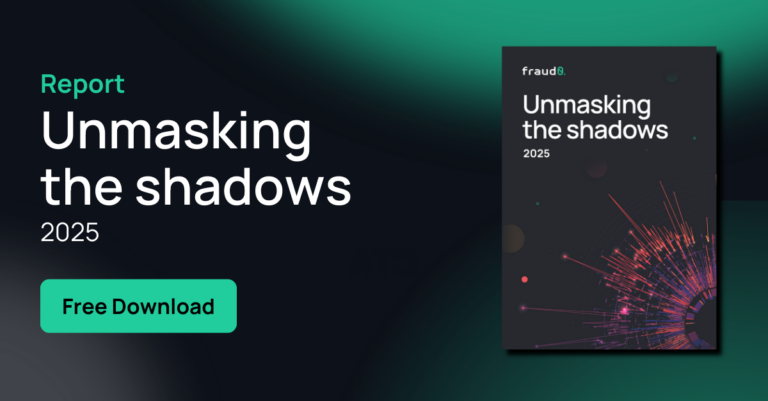- Blog
The importance of clean first-party data

Oliver Kampmeier
Cybersecurity Content Specialist

Data privacy laws around the world like the GDPR have shaken up many industries in recent years. From different software to marketing methods, companies need to adapt to the new realities to stay ahead of the competition.
In the age of privacy-centric marketing, advertisers must also rethink their practices. One element that all advertisers will stumble upon is first-party data. With all major browsers ending support for third-party cookies at the end of 2023, the shift to first-party data is already well underway for most companies. But there are also challenges that need to be overcome.
After an efficient and data protection compliant data collection, it is important to check this data. 57% of global internet traffic is invalid and originates from botnets, scrapers or crawlers. If you want to learn more about why and how bots are used, read our article about 7 tools and tactics used for ad fraud.
The high percentage of fake traffic means that much of the first-party data you collect is compromised and can therefore lead to bad marketing and even business decisions. As long as invalid data is not sorted out, you will continue to spend money on marketing activities but will not make any profit. On the contrary, bots on your website can even cause you a lot of trouble and worries, as we have shown in our previous article “The impact of invalid traffic on your marketing”.
In this article, we want to show you how to check your first-party data for purity, how to exclude invalid traffic, and how to use your marketing budget more efficiently.
“Fraudsters easily avoid detection from DV, IAS … that means traffic gets marked as valid even though it’s not from humans.” – Dr. Augustine Fou, World leading ad-fraud researcher
Advertising has changed
For a long time, cookies have allowed advertisers to track consumers on the Internet and display targeted ads based on a user’s browsing behavior. This is about to change – tracking options are decreasing or becoming more and more complex to implement!
- Google will eliminate third-party cookies in Google’s Chrome browser starting in mid-2023 – Safari and Firefox have already been doing this for some time. This will put an end to third-party cookie-based advertising, as Chrome is the leading browser worldwide with nearly 70% market share.
- Apple has tightened the rules for its identifiers for advertisers (IDFAs).
- Apple also requires explicit consumer consent for tracking in mobile apps known as App Tracking Transparency (ATT). This prohibits app providers from tracking users based on device identifiers across the Apple ecosystem.
Both Google and Apple have stated that they will not develop or support workarounds such as probabilistic fingerprinting for user profiling in their ecosystems.

What does that mean for advertisers?
Both the new privacy laws and the end of third-party cookies present advertisers with a new set of challenges:
- Avoid adverse effects on advertising efficiency and thus on the ROI of advertising
- Create a balance between precise targeting and impact measurement and consumer privacy.
Adaption of advertising strategies
As tough as the current times may be, companies need to revise their advertising strategies by responding positively to the situation and thereby gaining a competitive advantage. Below are a few ideas on how your company can make the transition.
- Establishing partnerships for the use of second-party data
Data sharing allows you to maximize the value of your own data. Advertisers can partner with other companies that have complementary interests. One option for secure data exchange is the concept of the data clean room. It is comparable to the trust account of a notary. Here, the shared data is stored in the cloud by a neutral third party, with neither party having to disclose their data to the partner. - Use customer touchpoints to capture first-party and zero-party data
Make sure you build and maintain strong customer relationships. At the same time, the protection of user privacy must be respected. This also means that you increase transparency about data processing and use. Another very important aspect is the transparency of value exchange, building consumer trust and providing value in exchange for data. Explain to your users what they will receive in exchange for their data. This applies for the cookie consent to be able to deliver personalized ads, as well as for the use of existing customer data via technologies like CDPs. Using CRM data for online channels requires the user to give an additional permission (besides the cookie consent) e.g., for the connection of browsing behavior and CRM data or the push to walled gardens like Google or Meta. But why should users give their permission? Be transparent and try to explain the benefits for them in order to obtain their permission. - Contextual and interest-based advertising
Contextual targeting is about identifying a user’s interests based on the context of the ad, such as the user’s location or the website they are on, and serving interest-based ads based on that. The contextual advertising is based only on the general interest of the user. As users increasingly distrust tracking and tech giants limit person-level targeting online and in apps, contextual advertising is emerging as a promising way for brands to reach their audiences. Especially since new contextual targeting tools are rapidly evolving technologically and state-of-the-art algorithms ensure speed, accuracy, and reliability of advertising.
The panacea: investing in first-party data and zero-party data
First-Party Data
First-party data is the foundation of the new marketing landscape. First-party data is collected directly from customers and passively captured – without the user’s direct involvement, but with their consent. This includes information such as browsing behavior, content consumption, location, device, and time of day.
Zero-Party Data
Zero-party data is data that users provide voluntarily and on their own initiative, in particular because they hope to gain an advantage or have products tailored to them. Zero-party data is data such as the user’s clothing size, intentions, preferences, and lifestyle. To truly understand the user, advertisers need more than just technical behavioral data. One way to convince users to open up and share personal information is to offer them something valuable in return. For example, personalized product recommendations or exclusive and early access to new products tailored to the user’s interests.
Review your data!
If you’ve gotten this far, you should take one more step to make sure your efforts were worthwhile. Check your received first-party and zero-party data for accuracy and authenticity. Because remember: 57% of all internet traffic is invalid or fake!
If you need help with the verification: In our article “How to detect IVT using your own analytics” we show you how to detect fake traffic in your own analytics tools.

Invalid traffic has a massive impact on your marketing activities
Invalid traffic impacts all digital marketing activities and can be broken down into 3 main pillars:
- Wasted Ad Spend Fake clicks on your ads will not only lose you a lot of money directly, but also in the long run due to bots infiltrating your remarketing lists and custom audiences. Also your ad delivery optimization gets skewed. The more bots click on your ads, the more bots will see your ad.
- Polluted Marketing Analytics Bots nowadays are able to accept consent banners, leaving you with skewed analysis, both the opt-in rates from your CMP provider and your website statistics.
- Polluted Sales Funnel If that was not enough to combat fake traffic, take it from us: bots are even smart enough to fill out a form and enter your CRM, causing a major headache for your sales team as they try to distinguish real people from fake bot entries.

“Accessing data is becoming more challenging, so make efficient use of your data.” – Tilman, Pfeiffer, CEO fraud0
Automatically eliminate invalid traffic with fraud0
This is where automatic real-time blocking solutions like Fraud0 come into play. By implementing our code into your website, our system automatically detects fake and invalid traffic, as well as low-quality traffic patterns, and excludes them from further viewing of your ads in real time.

Actionable insights to manually improve your traffic quality
You can use our analytics suite to get an in-depth look at your traffic in real-time and to understand where exactly the invalid traffic is coming from. You can also compare which platforms drive invalid traffic, or which channels or keywords are bringing in a lot of fraudulent activities. Furthermore, you can then exclude those keywords or shift your budgets to platforms and campaigns that perform better and drive high-quality traffic.

Clean first-party data is gold
Not only do you need to think about how your company can manage the transition to first-party data in the future, but you also need to think about how you can verify the purity of your data.
- Separate human data from useless bot data
- Block bots and stop spending your advertising budget for bots or invalid users
- Eliminate click fraud across all channels
- Maximize your return on investment in advertising
Sign up for a free 7-day trial with Fraud0 today and see the results for yourself – no strings attached and no credit card required.
- Published: May 30, 2022
- Updated: November 28, 2023
1%, 4%, 36%?








